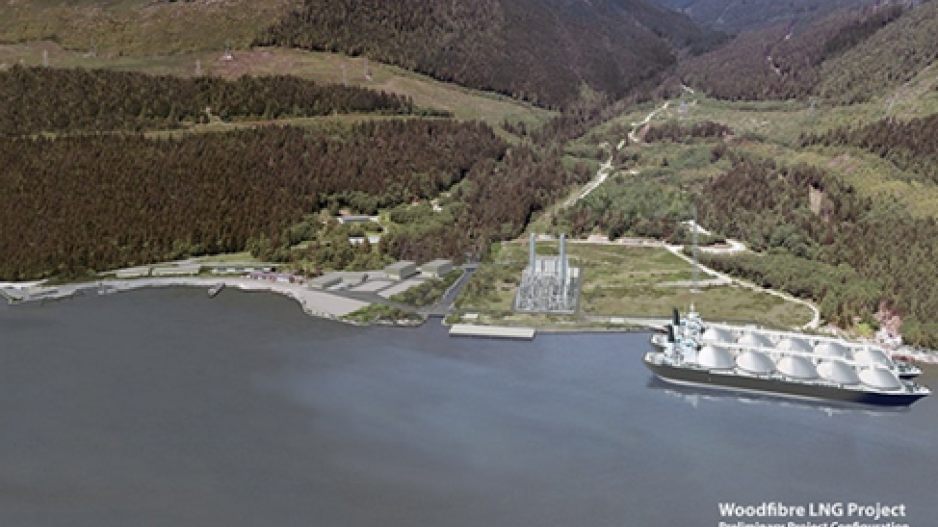The company behind the Woodfibre LNG plant is addressing one of the project’s outstanding environmental concerns by agreeing to ditch plans to use seawater in the plant’s cooling process.
One of the 25 conditions for approval set out by the Squamish First Nation was to find an alternative to seawater cooling. This week, Pacific Oil and Gas announced it will comply with that condition by using air cooling instead.
Also this week, the company announced it had awarded contracts for front-end engineering and design (FEED) services with two companies: JGC Group and KBR Inc. (NYSE:KBR), both based in Houston, Texas.
Liquefying natural gas involves cooling it to -160 C. Since that refrigeration process uses heat exchange, it generates a considerable amount of waste heat.
Originally, the plan was to use seawater from Howe Sound for cooling. It would have used 17,000 cubic metres of seawater per hour, and the recirculated water would re-enter Howe Sound at a higher temperature, which raised concerns about the impacts on the local marine environment.
The Squamish First Nation supports the project, but has set 25 conditions, one of them being an alternative to seawater cooling.
Moving to air cooling will have an impact on the plant’s economics, since it means it will reduce the annual production of LNG by about 2% or 42,000 tonnes per year.
The total production capacity of the Woodfibre LNG plant is 2.1 million tonnes per year, which is about one-ninth the scale of some of the larger LNG plants that have been proposed elsewhere in B.C.
“When you’re building a relationship, you have to make some compromises,” Byng Giraud, Woodfibre’s vice-president of corporate affairs, told Business in Vancouver.
“And all things being equal, it was a compromise we were willing to make.”
Unlike other LNG proposals, the Woodfibre LNG plant will use electric drive for the liquefaction process rather than direct drive, which burns natural gas.
As for the two FEED contracts awarded, Giraud said they will take eight months to a year to be completed. Once both companies have submitted proposals for a turnkey solution, the contract to design the plant will be awarded to one of the companies.
Giraud said the FEED studies do not need to be complete for Pacific Oil and Gas to move ahead with a final investment decision, but that it’s unlikely to happen before the end of the year.
Woodfibre LNG already has signed a tentative offtake agreement with a Chinese buyer for about half of the plant’s annual production, although it has not yet settled on a price.




